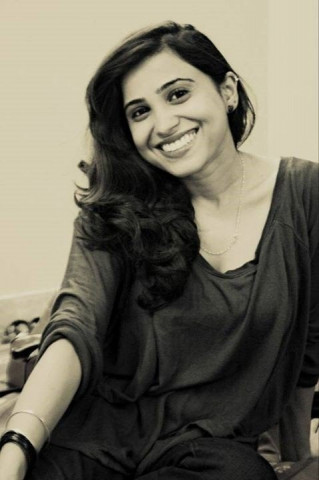
She displayed her visual diaries at her first solo show, titled ‘Uncharted Territory’, at the Sanat Gallery. "My work is a journey - a road leading to the unconscious land where dreams are a mystery, experiences are pages of a notebook, and existence a weird drama," she said, explaining the idea of working on the physique of women.
Describing the title of the show, she told The Express Tribune that a woman is something beyond her body and physical appearance. "I wanted to show the hidden beauty and frustration of a woman which men don't understand in our society," said Khatri, who graduated from the Indus Valley School of Art and Architecture in 2012.
Using graphite and water colour on paper and wasli, the young artist took seven months to complete the 22 pieces which are on display till February 28. Khatri has put into picture her love for the colour yellow, using beehives and bumblebees as the secondary character in her work. "Yellow is very prominent and eye-catching,” she said, while pointing towards a piece titled ‘Cringe to the Fringe of Fear’. “You can view this bee as a man who wants to dominate over all the women in his life.”
According to the young artist, each of her works is a depiction of reality as she sees it. "I have visited several countries and found that the problems of women are same regardless of religion and culture," she said. "The sense of insecurity prevalent among women has led me to work on women body parts."
Commenting on women, the artist drew screws to depict the flexibility of a woman. "These screws describe how our lives are controlled by a male, be it a father, brother, husband or son," she said. Interestingly, many of her works do not have a face. The purpose, according to the artist, is to give space to the viewer to understand her work. "The current series of work exhibits the visual gardens of my perceptual field," she pointed out. "When you look carefully, each mark, detail and colour represents a story of its own."
Describing the changing phases of women, she portrayed the journey of a daughter to becoming a mother in her piece, titled 'Under Layers of Many Lost'. "I wanted to show how both generations are joined with each other, which is why I depicted them as conjoined twins," she explained.


















COMMENTS
Comments are moderated and generally will be posted if they are on-topic and not abusive.
For more information, please see our Comments FAQ